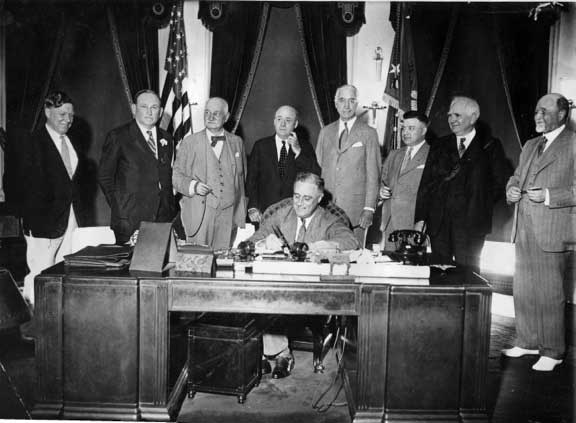US Goes off Gold Standard

FDR Signing
President Roosevelt decided to take the United States off the Gold Standard. The decision upset many other countries.
One of the significant economic debates that divided economists surrounded accurately quantifying the potential risks vs. possible advantages of inflating the value of currency. Many economists thought the only way to get out of the depression and achieve a drop in prices was to inflate the value of currency actively. Others genuinely feared the runaway inflation that had hit Germany during the Weimer years. Roosevelt was agnostic regarding this question. As the Depression deepened in Europe, a number of European countries took their currency off of the Gold Standard. This allowed the Europeans to print money and inflate their economies. With some prodding (from an unlikely corner, the House of Morgan), President Roosevelt became convinced that this was the right direction for the United States. On April 18th,1933 Walter Whitman wrote a very influential column, in which he stated that: “the United States faces a choice between keeping up prices at home and defending the dollar abroad. No nation could do both.” A few hours later Roosevelt held a meeting with his economic advisors and announced his unilateral decision to take the United States off the Gold standard.
 >
>